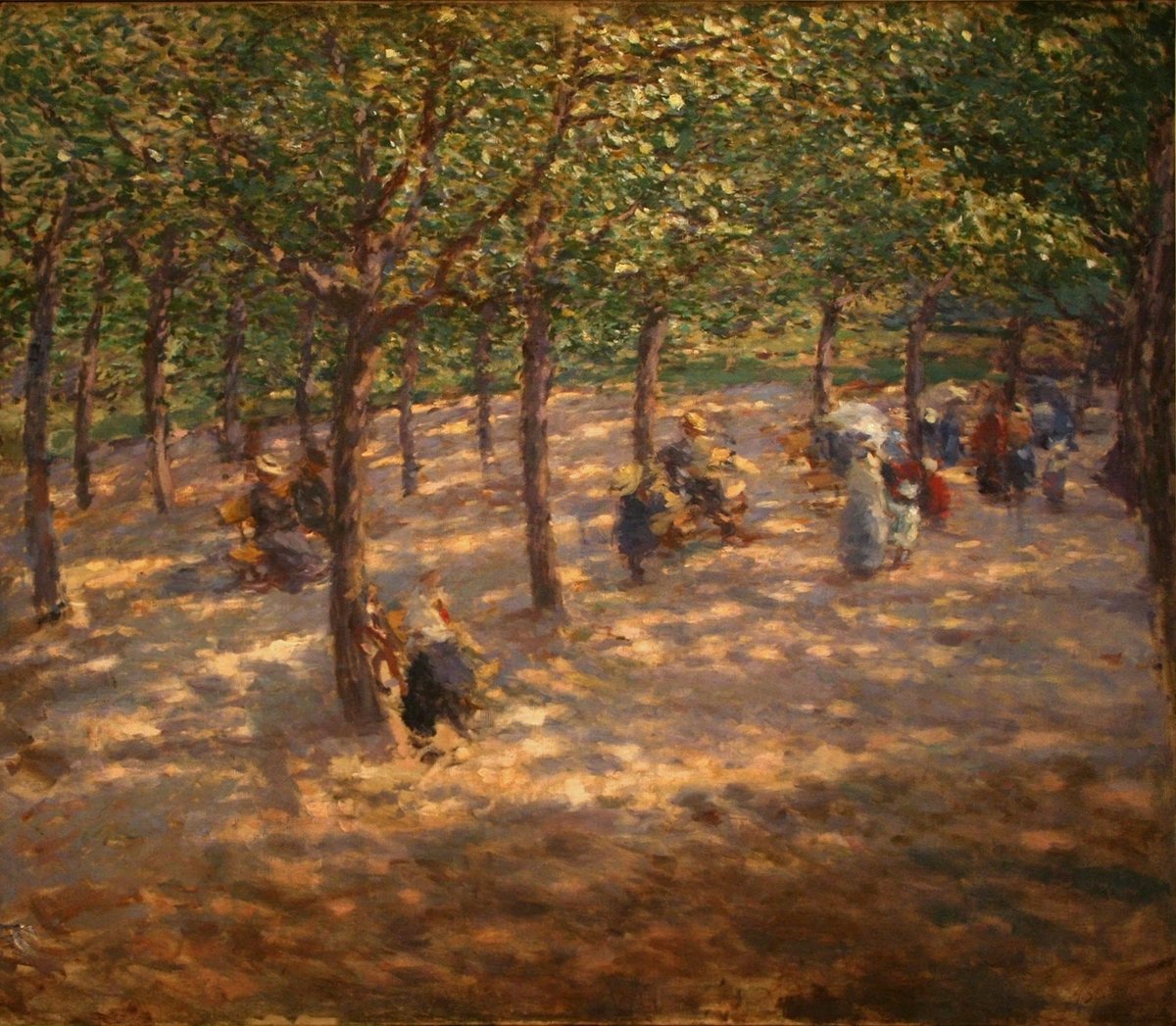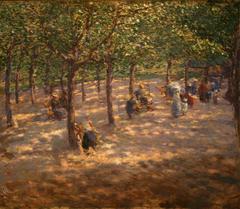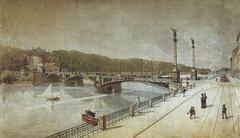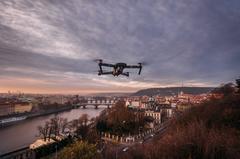
Letná Park Prague: Complete Guide to Visiting Hours, Tickets, Attractions, and Travel Tips
Date: 15/06/2025
Introduction: Letná Park’s Legacy in Prague
Letná Park (Letenské sady), perched atop a scenic plateau above the Vltava River, is one of Prague’s most treasured green spaces and a living witness to the city’s rich history. With sweeping views of the Prague Castle, Charles Bridge, and the Old Town, the park is beloved by locals and visitors alike for its blend of natural beauty, cultural landmarks, and pivotal role in Czech history. From its beginnings as medieval vineyards, through its transformation into a 19th-century public park, to its status as a stage for major 20th-century political events, Letná Park embodies the spirit and resilience of Prague. Today, it unites historic monuments such as the Hanavský Pavilion and Letenský zámeček with vibrant urban culture, family-friendly amenities, and some of the city’s best photo opportunities.
This detailed guide covers everything you need to know for an enriching visit—from Letná Park visiting hours and ticket information, to its architectural highlights, cultural festivals, accessibility, travel tips, and more. For the most up-to-date and in-depth information, consult trusted resources like Private Prague Guide, View from Prague, and Avantgarde Prague.
Table of Contents
- Introduction
- Historical Overview
- Architectural and Cultural Landmarks
- Panoramic Viewpoints
- Main Attractions
- Sports & Recreation
- Events & Festivals
- Accessibility & Amenities
- Visiting Hours & Ticket Information
- Getting There & Travel Tips
- Frequently Asked Questions (FAQ)
- Conclusion & Call to Action
- References
Historical Overview
Medieval Origins
Letná’s story dates back to the 13th century, when its slopes were covered in vineyards and the hill hosted significant celebrations, such as the 1261 coronation of King Přemysl Otakar II (Private Prague Guide). This tradition of community gatherings has continued for centuries.
19th Century Transformation
The 19th century saw Letná’s evolution into a formal urban park. The construction of Letenský zámeček in 1863, a neo-Renaissance chateau by architect Vojtěch Ignác Ullmann, established the park’s role as a social and recreational hub. The 1891 Jubilee Exhibition introduced the Hanavský Pavilion, an ornate cast-iron structure that remains a beloved restaurant and viewing terrace (Private Prague Guide). Letná also became a terminus for Prague’s first tram and briefly featured a funicular and carousel, highlighting its early reputation for leisure and innovation.
20th Century Political Significance
Letná Park has often been at the center of Czech political life. The Stalin Monument, once the world’s largest statue of Joseph Stalin, dominated the skyline from 1955 to its demolition in 1962, symbolizing the Communist era. Its removal paved the way for the installation of the Prague Metronome in 1991, symbolizing the passage of time and Prague’s transformation (Kemal Onur Ozman).
The adjacent Letná Plain became a focal point during the 1989 Velvet Revolution, when over 750,000 people rallied for democracy. The park also hosted a historic mass by Pope John Paul II in 1990, further cementing its place in the city’s collective memory (Private Prague Guide).
Architectural and Cultural Landmarks
- Hanavský Pavilion: Built for the 1891 Jubilee Exhibition, this ornate cast-iron building is now a restaurant and terrace with some of Prague’s best views (Private Prague Guide).
- Letenský zámeček: A neo-Renaissance chateau serving as a restaurant and event space.
- Expo 58 Pavilion: Originally constructed for the 1958 Brussels World’s Fair, this modernist gem now hosts a restaurant (Private Prague Guide).
Panoramic Viewpoints and Cityscapes
Letná Park is renowned for its spectacular views over Prague’s historic heart, the Vltava River, and its legendary bridges. The southern edge of the park, especially near the Hanavský Pavilion and Prague Metronome, provides some of the most iconic vistas in the city—perfect for photography at sunset or during golden hour (delveintoeurope.com; praguewise.com).
Main Attractions
Prague Metronome
A 23-meter kinetic sculpture installed in 1991 on the site of the former Stalin Monument, the Prague Metronome is both a symbol of the city’s post-communist renewal and a vibrant gathering place. The broad plaza beneath it, known as “the Stalin pavement,” is popular with skateboarders and street artists (prague-rental-apartments.com; praguewise.com).
Hanavský Pavilion
This striking Art Nouveau landmark is a favorite for romantic dinners, coffee breaks, and panoramic city views. Its terrace is a prime location for sunset photography (delveintoeurope.com; prague-rental-apartments.com).
Letenský zámeček
The park’s neo-Renaissance chateau serves as a restaurant and event space, offering elegant interiors and outdoor seating amid lush surroundings (praguewise.com).
Letná Beer Garden
Set among mature trees near the southern edge, the beer garden is open from May to September (typically Mon–Fri 16:00–23:00, Sat–Sun 12:00–23:00). Enjoy Czech beers, casual food, and convivial atmosphere with a spectacular city backdrop. It’s a favorite with both locals and visitors (delveintoeurope.com; praguewise.com).
Children’s Playground
One of Prague’s largest playgrounds features areas for toddlers and older kids, with slides, climbing frames, and sandpits. Benches and grassy areas provide relaxation for parents (delveintoeurope.com; prague-rental-apartments.com).
Sports & Recreation
Letná Park’s expansive lawns and tree-lined avenues are ideal for jogging, cycling, rollerblading, frisbee, yoga, and picnics. Tennis courts and ball game facilities can be rented near the park’s center. The area around the Metronome is also a renowned skateboarding spot (prague-rental-apartments.com; Wikipedia).
Events & Festivals
- Letní Letná Festival: Every August, Letná transforms into a vibrant stage for contemporary circus, theater, and family workshops (yumprague.com; praguecityadventures.com).
- Political Gatherings & Concerts: The park has hosted major political rallies and concerts, including Michael Jackson’s 1996 tour (Wikipedia).
- Seasonal Events: Open-air concerts, light art installations, and New Year’s fireworks regularly animate the park.
Accessibility & Amenities
Letná Park is accessible via tram lines 1, 8, 12, 15, 17, 25, and 26, with stops at Sparta, Korunovační, Letenské náměstí, Chotkovy sady, and Čechův most. The nearest metro station is Hradčanská (Line A), just a five-minute walk away. The park features paved paths suitable for wheelchairs and strollers, though some entrances, such as the steps from Čechův Bridge, are steep. Restrooms are available near the Beer Garden and Hanavský Pavilion (small fee, cash only). Benches, picnic areas, and snack kiosks are plentiful (delveintoeurope.com; Avantgarde Prague).
Visiting Hours & Ticket Information
- Opening Hours: Open 24 hours a day, year-round.
- Admission: Free entry; no tickets required for the park itself.
- Attractions: Some venues, like the Hanavský Pavilion or special exhibitions, may have separate hours and entry fees.
- Beer Garden Hours: May–September, Mon–Fri 16:00–23:00, Sat–Sun 12:00–23:00 (cash only).
Getting There & Travel Tips
- By Tram: Letenské Náměstí (trams 1, 8, 12, 25, 26), Chotkovy sady (5, 12, 18, 20), and Sparta stops are all close to main entrances (View from Prague).
- On Foot: Walk from Prague’s Old Town via Čechův Bridge and climb the steps to the Metronome for a scenic entrance.
- By Bike: Wide, gently sloping paths are ideal for cycling.
- Best Visiting Times: Spring and autumn for mild weather and vibrant foliage; weekdays and early mornings for fewer crowds.
- What to Bring: Cash for the beer garden, comfortable shoes, and sun or rain protection as needed.
- Nearby Attractions: National Technical Museum, National Agriculture Museum, Stromovka Park, and Prague Castle are all within easy reach.
Frequently Asked Questions (FAQ)
Q: What are Letná Park’s visiting hours?
A: The park is open 24/7, year-round.
Q: Is there an entrance fee?
A: No, the park is free to enter. Some venues inside may charge separately.
Q: Are dogs allowed?
A: Yes, dogs are allowed but must be kept on a leash.
Q: Is Letná Park accessible for wheelchairs and strollers?
A: Most main paths are accessible, but some entrances are steep. Use Letenské Náměstí or Chotkovy Sady for easiest access.
Q: Are guided tours available?
A: Yes, local operators offer historical and photography tours.
Q: Where are the best photo spots?
A: Near the Hanavský Pavilion and the Prague Metronome for panoramic city views.
Conclusion & Call to Action
Letná Park is more than a city park—it is a living chronicle of Prague’s history, a canvas for urban culture, and a retreat for relaxation and recreation. Whether you’re seeking breathtaking views, rich historical context, vibrant festivals, or tranquil picnic spots, Letná Park promises a memorable experience at the heart of Prague. Enhance your visit with guided tours, interactive maps, and audio guides available via the Audiala app. Stay connected for the latest events by following us on social media and checking official resources.
References
- Letná Park Prague: History, Visiting Hours, Tickets, and Travel Tips, 2025, Private Prague Guide
- Letná Park Visiting Guide: Historical Sites, Visiting Hours & Cultural Highlights in Prague, 2025, Kemal Onur Ozman
- Letná Park Prague: Visiting Hours, Tickets, Main Attractions & Guided Tours, 2025, Delve Into Europe
- Practical Visitor Information, 2025, View from Prague
- Letná Park Overview, 2025, Avantgarde Prague
- Wikipedia – Letná Park

























































































































































































